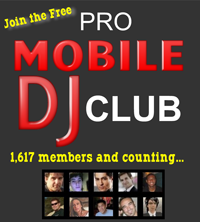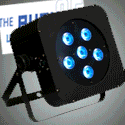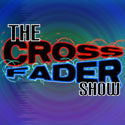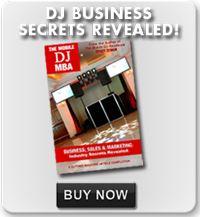By Dave Austin, “Music Professor”
In an interview, trombonist J.J. Johnson observed, “Jazz is restless. It won’t stay put and it never will.” Jazz, in its various incarnations, now spans over 100 years – from ragtime to the present day, making it nigh impossible to define. Music scholars spend hours trying to succinctly define jazz – but so far have failed. One thing we can say with certainty - jazz has in some way influenced almost every genre of music heard today.
While hard to define, we do know that improvisation is a key element. While classical musicians will not vary their playing by a single note, the jazz performer will never play a tune the same way twice. Depending on his mood, personal experience, interactions with fellow performers and even the audience, the jazz musician constantly changes melodies, harmonies, and even time signatures at will.
Once the pop music of its day, jazz is less popular today, but it has reached across the decades, subtlety changing and influencing generations of musicians and steadily commanding loyal audiences. Let’s briefly look at some of the major contributions handed down to us by our jazz pioneers.
Before jazz, most kinds of music placed the emphasis on the beat, making it sound rigid and formal. Jazz musicians, never being ones to play the norm, started placing the emphasis between the beats – giving a “hiccup” effect. It was called syncopation, and today, it’s a standard music tool.
No modern band or musical group would be complete without drums, and most often, a drum kit. Early jazz groups combined the snare, bass drum and cymbals into a single unit played by one person. Before, a rhythm section was comprised of multiple individuals playing single instruments (a bass drummer, a snare drummer, cymbalist, etc.)
Invented in 1840, the saxophone was originally relegated to military concert bands until jazz musicians discovered it possessed unique tonal qualities and sound projection. The sax immediately became the preferred reed instrument for jazzmen and their improvisational solos.
Much of today’s music takes its cue from jazz, using multiple chord progressions, giving compositions richness and a feeling of forward movement. In earlier days, only three chords – made up of three notes and called a triad - would be used. During the “Bebop” jazz period, musicians began incorporating as many as seven or eight different chords, and while not as complex, today’s music takes its cue from this and commonly uses four or five different chords.
“But not classical music!” you might say. You’d be wrong - as any classical music fan can tell you.
Jazz has made a huge footprint in modern classical compositions.
Here are some modern composers who wrote their scores in jazz mode:
- George Gershwin - Rhapsody in Blue, An American in Paris, Porgy & Bess
- Leonard Bernstein – Serenade after Plato’s “Symposium”
- Kurt Weill – Three Penny Opera
- Igor Stravinsky – Ebony Concerto, Ragtime for 11 Instruments
- Gunther Schuller – Concerto for Jazz Quartet and Orchestra
- Aaron Copland – Something Wild (Film score)
Out of all this growth and exploration came groups such as Jefferson Airplane and the Grateful Dead who made it acceptable for rock bands of the 1960s to do much the same thing as their jazz counterparts. Today, there is a whole genre of music – jam bands (Phish, Disco Biscuits, Widespread Panic) – using jazz elements to create their music
Hip-hop was born from funk, R&B and blues – all deeply rooted in jazz. Although not achieving mainstream status, jazz rap typically uses the rhythms of hip hop but incorporates repetitive phrases by jazz instruments (trumpet, double bass, etc.) while the rapper improvises the lyrics. (Native Tongues Posse, A Tribe Called Quest, Jungle Brothers, etc.) More recently, jazz rap can be heard in the work of producers J. Rawls, Fat Jon and in particular, Nujabes.
A hip hop project which continued the jazz connection was Guru’s Jazzmatazz series which used live jazz musicians in the studio. Spanning 1993 – 2007, the four volume set features jazz heavy-hitters like Freddie Hubbard, Herbie Hancock and others and hip hop performers like Cool Keith, Common, DJ Premier, etc.
Adele has said that she was deeply influenced by Etta James and jazz elements are heard in some of the young diva’s songs. Listen to “I’ll Be Waiting,” “Melt My Heart to Stone” or “Many Shades of Black.” For more of this jazz legacy, check out Michael Buble’, Norah Jones, Amy Winehouse, Jill Scott, Spencer Day and Musiq Soulchild.
We’ve long heard that “Jazz is dead.” If that’s true, why do jazz festivals and concerts continue to attract huge crowds? The Reno Jazz Festival attracts as many as 10,000 fans each year, as does the New Orleans Jazz and Heritage Festival and the Newport Jazz Festival, one of the longest-running events of its type.
Think you don’t like jazz? Again, you’d probably be wrong as you can take your pick from a large selection of styles that can suit almost any taste. Let’s see…there standard, cool, smooth, jazz funk, jazz fusion, bop, swing, New Orleans, jazz rock, jazz rap…and the list goes on and on.
Still, some say jazz is dead, but according to fans, it just won’t lie down.
What type of events do you think Jazz works best with, and when do you play it?







